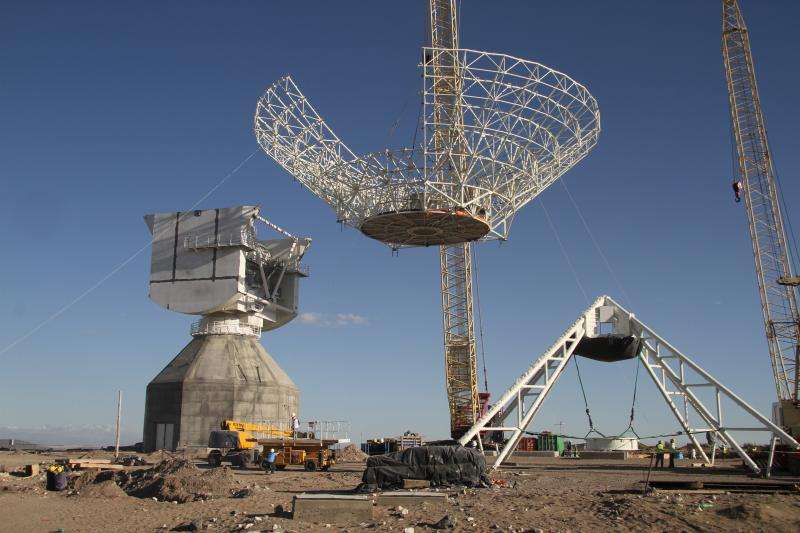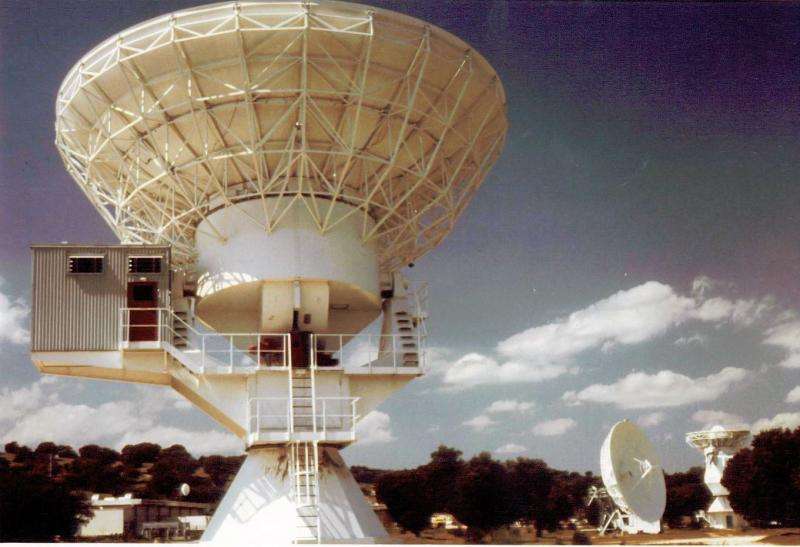Four decades of tracking European spacecraft

Forty years ago this week, a satellite ground station in Spain became the first to be assigned to what would become ESA. Since then, the network – Estrack – has expanded worldwide and today employs cutting-edge technology to link mission controllers with spacecraft orbiting Earth, voyaging deep in our Solar System or anywhere in between.
On 19 May 1975, a ground station at Villafranca del Castillo, Spain, built for the International Ultraviolet Explorer satellite was assigned to ESRO to support future ESA missions.
Later that month, ESRO merged with ELDO to form ESA, and the Villafranca station became the kernel of Estrack.
The 15 m-diameter parabolic dish antenna of the Villafranca station has been part of many major ESA missions, including Marecs, Exosat, ISO, Integral and Cluster, and, more recently, XMM and ATV .
It was later joined by similar stations in Sweden, Spain, French Guiana, Belgium and Australia, all optimised for tracking satellites near Earth. The original Villafranca location has since become ESAC, the European Space Astronomy Centre, ESA's major establishment in Spain.
Worldwide network
Estrack has evolved with the expanding needs of ESA's science, Earth and exploration missions. Today, there are 10 stations in seven countries, all centrally managed from ESOC, the European Space Operations Centre, Darmstadt, Germany.
The essential task of Estrack stations is to communicate with spacecraft, transmitting commands and receiving scientific data and spacecraft status information. They also gather 'radiometric' information to help mission controllers know the location, trajectory and speed of their spacecraft.
Tracking is provided through all phases of a mission, from 'LEOP' – the critical Launch and Early Orbit Phase – through to routine operations and ultimately deorbiting and safe disposal. Estrack also tracks rockets flying from Kourou in French Guiana.
In a typical year, stations provide over 45 000 hours of tracking to more than 20 missions, with an enviable service availability rate above 99%.
Building Europe's deep-space capability
In the 2000s, the first of three 35 m-diameter Deep Space Antennas was built in New Norcia, Australia, followed by stations at Cebreros, Spain, and Malargüe, Argentina. These feature some of the world's best tracking station technology and enable communications with spacecraft exploring planets, watching the Sun or located at the scientifically crucial Sun–Earth Lagrange points.
In January 2014, Estrack received signals and sent commands to Rosetta, then travelling some 800 million km from Earth.

Estrack routinely communicates with missions voyaging across our Solar System, including not only ESA missions like Rosetta, Venus Express and Mars Express but also partner missions like Japan's Hayabusa-2, heading towards an asteroid landing in 2018.
Global cooperation
The capabilities of the network enable Estrack stations to support missions of other space agencies in the US, France, Germany, Japan, Russia and China.
In future, the three deep-space stations will be upgraded to use ultra-high radio frequencies, necessary to boost scientific data delivery from missions like BepiColombo and Juice. Of course, the network will continue to work with Earth observation missions and perform critical LEOP and launcher tracking.
Happy birthday, Estrack! And congratulations on four decades of linking people with spacecraft travelling to the frontiers of human knowledge.
Provided by European Space Agency




















